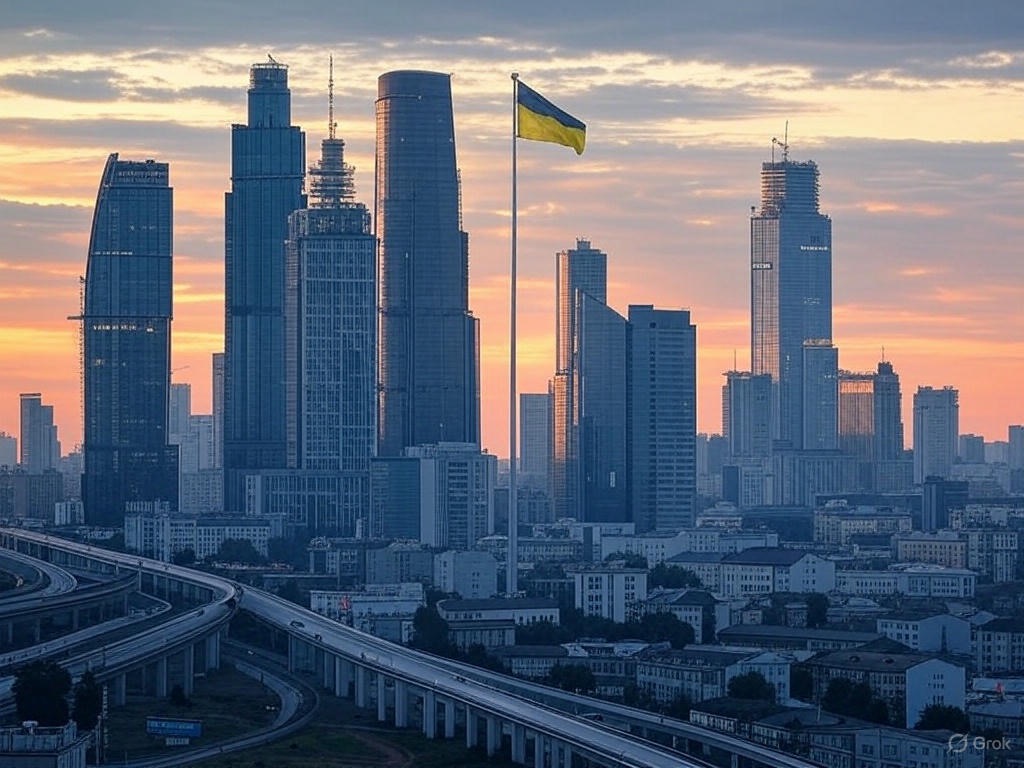For generations, the U.S. dollar has been more than mere money. It is the bedrock of the global economy, the financial world’s common tongue, the sun around which international trade and finance orbit. Nearly 60% of all foreign exchange reserves are held in dollars, a testament to its unrivalled power. But what if that sun began to flicker? What if, through some catastrophic crisis, a debt default, hyperinflation, a shattering loss of faith, the dollar became unviable?
This isn’t just a thought experiment for doomsday preppers. It’s a question that preoccupies the world’s central bankers and strategists. While a sudden collapse remains unlikely, a quiet de-dollarization is already underway. The greenback’s share of global reserves has slipped from 70% at the turn of the millennium, not into oblivion, but into a more complex and uncertain future. If the dollar’s throne were ever to truly empty, the scramble for a successor would reshape the global order. An examination of the contenders reveals a fascinating truth: no single heir is ready to rule. Instead, we are stumbling into a new, multipolar age of money.
The Heir Apparent with a Fatal Flaw
On paper, the euro is the only logical successor. It represents the world’s second-largest economic bloc and is already the runner-up in global reserves, commanding a stable 20% share. Backed by the European Central Bank (ECB), the euro benefits from a track record of low inflation, the rule of law across its member states, and deep, sophisticated financial markets. In a post-dollar panic, the euro would undoubtedly seem the safest port in the storm.
But look closer, and the cracks in the European project become a chasm. The euro’s greatest weakness is its original sin: it is a currency shared by 20 nations without a single, unified government to back it. There is no European Treasury Department issuing a single, ultra-safe asset equivalent to U.S. Treasury bonds. Instead, investors are faced with a fragmented quilt of German, French, and Italian debt, each with its own perceived risk. The memory of the 2010-2012 Eurozone debt crisis, which nearly tore the currency apart, lingers. Global investors learned the hard way that without a unified fiscal authority, the euro’s foundation is inherently less stable than the dollar’s.
Furthermore, Europe seems to lack the appetite for the role. A reserve currency superpower must supply the world with safe assets, which typically means running large, persistent deficits. The U.S. has run these deficits for decades, flooding the world with the dollars and bonds it craves. Yet powerhouse economies like Germany are built on export surpluses and fiscal prudence. The idea of flipping that model on its head to become the world’s debtor is politically and culturally unthinkable. The euro is a powerful regional king, but it isn’t built to take on the burdens of a global empire.
The Authoritarian Challenger and the Currency of Trust
If not Europe, then surely China? The world’s manufacturing titan and second-largest economy has made no secret of its desire to elevate its currency, the renminbi (RMB), and challenge American financial dominance. Beijing has established alternative payment systems, signed trade deals in its own currency, and secured the RMB’s place in the IMF’s prestigious basket of major currencies.
Yet, for all its economic might, the yuan accounts for a paltry 2.2% of global reserves. The reason is simple and profound: trust. A global reserve currency must be a safe haven, a sanctuary for a nation’s wealth. This requires an unshakable faith in the rule of law, independent institutions, and the free flow of capital. China offers none of these.
The Chinese Communist Party maintains an iron grip on its financial system, imposing strict capital controls that prevent money from moving freely in or out of the country. This is an absolute deal-breaker for central bank reserve managers who require unimpeded access to their funds. More fundamentally, the world has witnessed Beijing’s willingness to subordinate law to political will, whether by freezing markets or cracking down on successful companies. An asset that can be devalued or confiscated by decree is not a safe asset. Until China embraces genuine financial liberalization and the rule of law, steps that would require the Party to relinquish a degree of control it cherishes, the yuan will remain a paper tiger in the reserve currency arena.
Boutique Havens: Too Small to Scale
Beyond the giants, a few “boutique” currencies offer intriguing, if impractical, alternatives. The Swiss franc is the quintessential safe haven, backed by centuries of political neutrality and prudent banking. Yet Switzerland’s economy is 25 times smaller than that of the U.S. or Eurozone. It simply cannot issue enough franc-denominated assets to satisfy global demand. In fact, the franc is a victim of its own success; massive inflows during crises have forced the Swiss National Bank to impose negative interest rates to prevent its currency from becoming punishingly strong. The franc is a financial gourmet’s choice, not a global workhorse.
Even more fascinating is the Norwegian krone. Backed by Norway’s colossal $1.3 trillion sovereign wealth fund, the krone is arguably the most asset-backed currency on Earth. Some have speculated that its value could eventually become tied not to Norway’s small domestic economy, but to the performance of its global portfolio of stocks and bonds. It’s a revolutionary concept, a currency backed by the world economy itself. But like the franc, the krone is limited by its tiny scale and thin trading volume, making it an interesting curiosity rather than a serious contender.
The Real Story: A Council of Currencies
If no single successor is fit to rule, what is actually happening to the dollar’s waning share? The answer lies not with one rival, but with many. IMF data reveals a surprising trend: the primary beneficiaries of de-dollarization have been a collection of “nontraditional” reserve currencies. Central banks are diversifying into the Australian dollar, the Canadian dollar, the South Korean won, and the Swedish krona.
And another, more ancient asset is making a stunning comeback: gold. In a world of geopolitical tension and mounting debt, central banks have been buying the yellow metal at a record pace, seeking an asset that is beholden to no single government’s policies or political whims.
This points to the most realistic future: a multipolar monetary system. The dollar’s monarchy is giving way to a council of currencies. In this new world, the dollar will likely remain the “first among equals,” but its dominance will be checked and balanced by the euro, a gradually rising yuan, and a robust supporting cast of smaller currencies and gold. A country’s central bank might hold 40% of its reserves in dollars, 25% in euros, 10% in yuan, and the rest scattered across other currencies and precious metals.
This shift isn’t a catastrophe; it’s an evolution. A world less reliant on a single currency may prove to be a more stable and equitable one, less vulnerable to the economic shocks or political decisions of one nation. The age of the dollar’s unchallenged supremacy is drawing to a close, not with a bang, but a whisper, the quiet, inexorable logic of diversification. The throne isn’t being conquered; it’s being responsibly dismantled and shared.
Disclaimer: Important Legal and Regulatory Information
This report is for informational purposes only and should not be construed as financial, investment, legal, tax, or professional advice. The views expressed are purely analytical in nature and do not constitute financial guidance, investment recommendations, or a solicitation to buy, sell, or hold any financial instrument, including but not limited to commodities, securities, derivatives, or cryptocurrencies. No part of this publication should be relied upon for financial or investment decisions, and readers should consult a qualified financial advisor or regulated professional before making any decisions. Bretalon LTD is not authorized or regulated by the UK Financial Conduct Authority (FCA) or any other regulatory body and does not conduct activities requiring authorization under the Financial Services and Markets Act 2000 (FSMA), the FCA Handbook, or any equivalent legislation. We do not provide financial intermediation, investment services or portfolio management services. Any references to market conditions, asset performance, or financial trends are purely informational and nothing in this report should be interpreted as an offer, inducement, invitation, or recommendation to engage in any investment activity or transaction. Bretalon LTD and its affiliates accept no liability for any direct, indirect, incidental, consequential, or punitive damages arising from the use of, reliance on, or inability to use this report. No fiduciary duty, client-advisor relationship, or obligation is formed by accessing this publication, and the information herein is subject to change at any time without notice. External links and references included are for informational purposes only, and Bretalon LTD is not responsible for the content, accuracy, or availability of third-party sources. This report is the intellectual property of Bretalon LTD, and unauthorized reproduction, distribution, modification, resale, or commercial use is strictly prohibited. Limited personal, non-commercial use is permitted, but any unauthorized modifications or attributions are expressly forbidden. By accessing this report, you acknowledge and agree to these terms-if you do not accept them, you should disregard this publication in its entirety.



